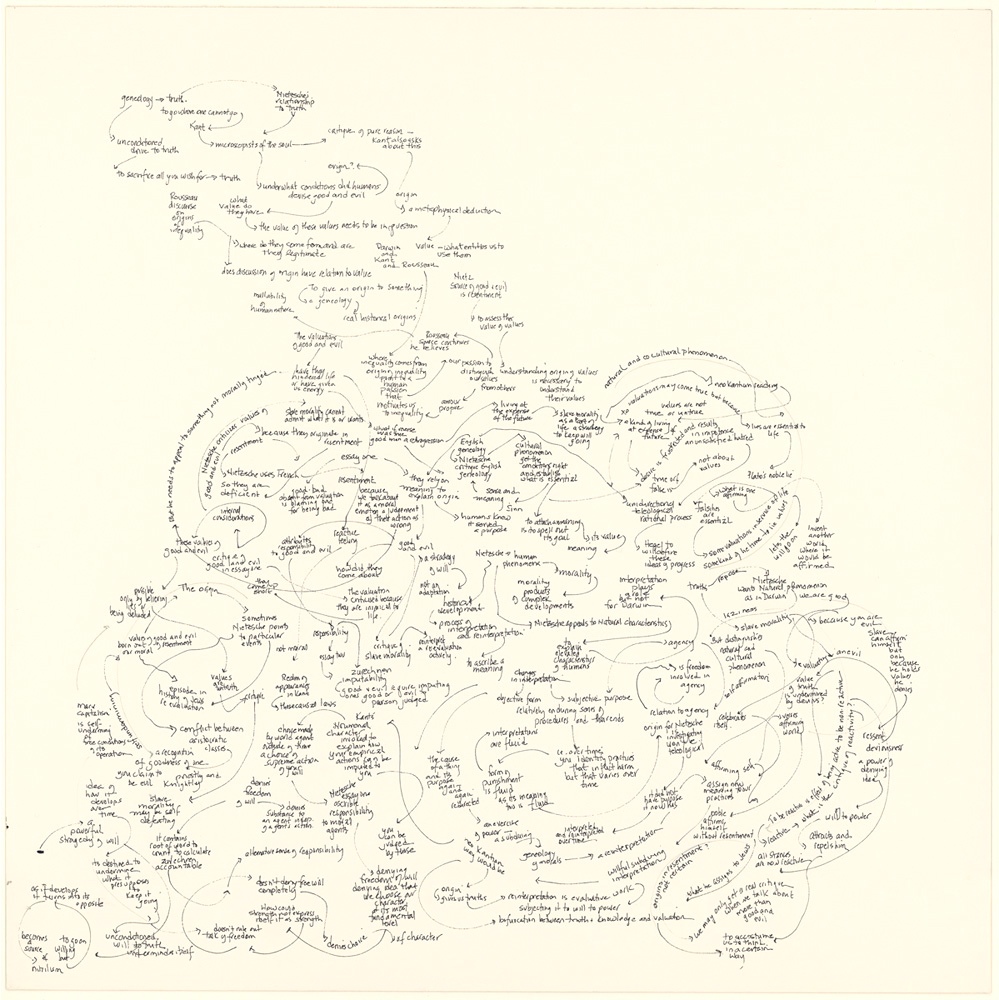

Philosophy 5
Ink on Paper
11″ x 14″
For me, the tenuous distinction between drawing and writing has always been a fascination. Class Notes emerged out of my quantum physics and philosophy seminars at Columbia University over a three-year period. Each drawing is completed within the span of a single class session. As I listened to lectures, I took notes; I re-inscribed what I heard, creating visual analogues to the intellectual adventures.
While a language may be inaccessible on one level, on another it may be captivating and inspiring as it is re-figured and embraced. I think of these drawings as part of the ongoing trespass that ensures the imagination and the intellect are contiguous. The meeting place of seemingly disparate disciplines is also the subject of my work. In these drawings, the literal is suspended in the abstract and a concept that garners meaning in one context is urged to inspire very different readings when re-mapped in another.
In these drawings, the literal is suspended in the abstract and a concept that garners meaning in one context is urged to inspire very different readings when re-mapped in another.


Philosophy 19
Ink on Paper
11″ x 14″


Philosophy 7
Ink on Paper
11″ x 14″
My interest in the theories and concepts of advanced physics, for instance, is not distinct from my curiosity about the mathematical ciphers, how the intriguing beauty of their form suggests but never explicates their meaning. Philosophy lectures (on Hegel, Kant, Nietzsche, Heidegger, the philosophy of Islam, and others) also inspire works that suggest some of the very dilemmas that the philosophy addresses. There is a play between the tangible and the intangible, the physical and the metaphysical, the miniscule and the grand. The tangling and untangling of strands, the movements between what is legible and what is illegible, are what enthralls me. As I engage that tension, the drawings become wondrous explorations of ambiguity and interpretive possibility.
While reading Jean-Luc Nancy’s writings on philosophy1, I came across an observation (which he makes regarding Hegel’s work) that seems appropriate to much of our experience but, in this case, to the act of drawing.
We could register a whole series of tremblings – religious or aesthetic, for instance. It is always the trembling of the finite seized by the infinite: it is the sensibility of the infinite in the finite. We also realize that Hegel does not have a definitive concept of this image. It comes to him in those places where categories fail and themselves tremble.
One could imagine a trembling palette for all art, a site of ambiguity emphasizing the idea that artistic composition itself is mysterious because of its tenuous presence, a presence that invokes continuous movement – toward and away from what is.
My hope is that these Class Notes invite expansiveness, the intersection of the aesthetic, intellectual, and theoretical possibilities.
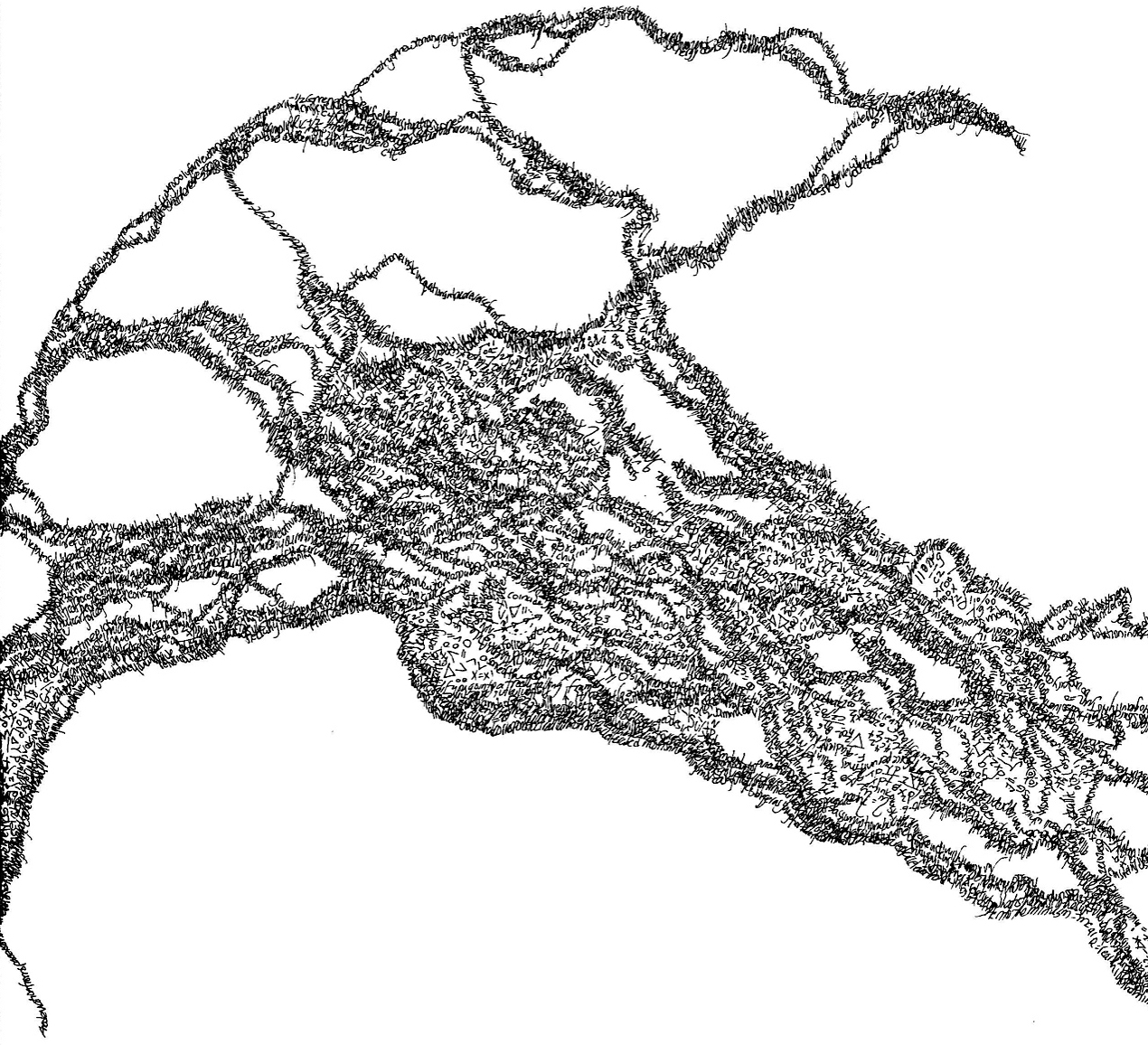

Quantum Physics 3 (Detail)
Ink on Paper
11″ x 14″
There is a play between the tangible and the intangible, the physical and the metaphysical, the miniscule and the grand. The tangling and untangling of strands, the movements between what is legible and what is illegible, are what enthralls me.
My background as an artist is somewhat unusual. I graduated from Barnard College in New York City with a degree in French literature, concentrating in 19th century French poetry. I received an MFA in poetry, under the tutelage of June Jordon and later completed a PhD in comparative literature. My doctoral dissertation focused on the modern elegy, specifically on the meeting place of language and the unspeakable: how we accommodate what is inaccessible to language.
As a student of poetry, I often read poets who sought to find visual analogues to the mind’s investigations. In my early years, the works of Stéphane Mallarmé and Francis Ponge, for instance, became catalysts for my own writing. I was, and continue to be, intrigued by writers who labor within language to lift themselves out of it. I cite Franz Kafka, whose works were the focus of many years of study. Kafka in his own life and in his writings, straddled an invisible divide, a horizon from where multiple perspectives could be viewed, a space where the world as he knew it and the worlds of his imaginations seemed to share a simultaneity of experience. Kafka thought of writing as a mediation between two worlds, one which could be articulated and another which hovered, above or outside, but never in the field of definition. These ideas have been formative to my work in both literary and artistic disciplines.
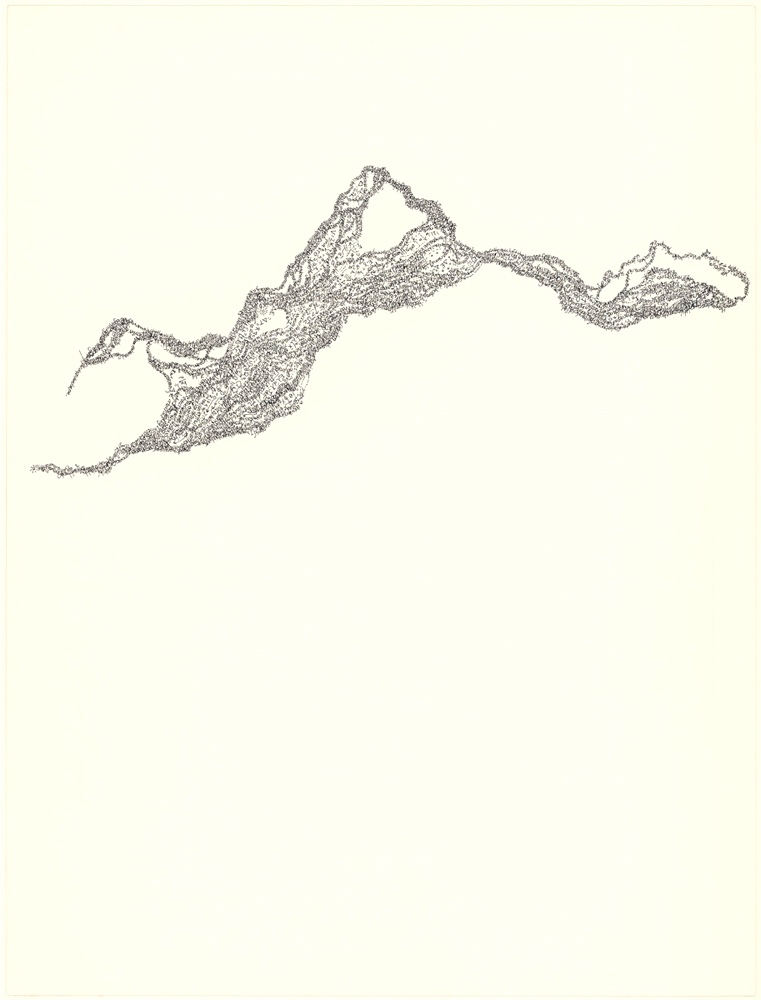

Quantum Physics 8
Ink on Paper
11″ x 14″
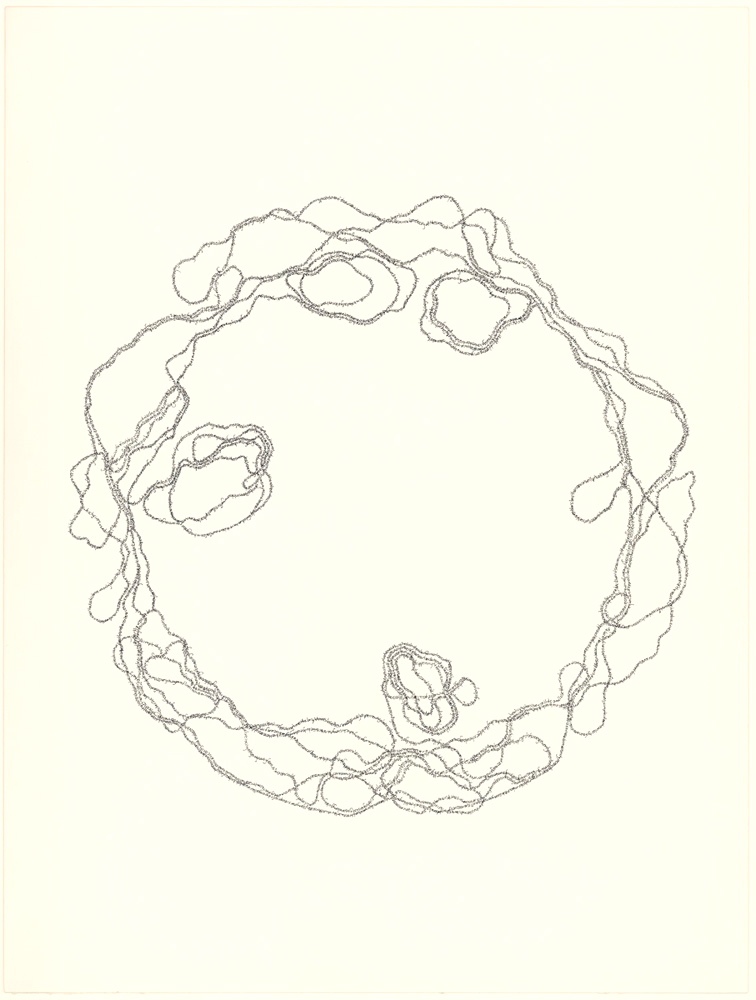

Quantum Physics 7
Ink on Paper
11″ x 14″
While I never formally studied art, I have been drawing with ink for years. During my many years of study and teaching, I often composed visual responses to the works I was reading; in my journals, I made ink drawings that were, looking back, re-iterations or re-imaginings of texts I was reading, abstracted from the originals but inspired by them.
It would be difficult to define the reasons for my moving from years of literary studies to the making of art, specifically drawing, but the movement was, and continues to be, fluid, with intimate association. I am fascinated by the many ways we can inscribe a page, whatever the lines that claims that field may be. My work seems, in part, to be an exploration of the possibilities of inscriptions, of the thinking-drawing-gesturing that composes works on paper. The more I draw, the more I recognize that the process of pushing into the possibilities of drawing (and being able to access the openings where those possibilities might take root) is always accompanied by a challenge to understand the impulse itself, what is at the root of the desire to draw. In many ways, my career is an investigation of what brings me to make art and why my intellectual interests seem so integral and essential to it.
My drawings have been exhibited over the past decade in many venues, including The Drawing Center in New York City, The Weatherspoon Art Museum in North Carolina, The de Cordova Sculpture Park and Museum in Massachusetts, The Hood Museum at Dartmouth in New Hampshire, The McMullen Museum at Boston College, The Santa Barbara Museum of Art in California and The Jewish Museum in New York. The drawings are included in the collections of the Whitney Museum of American Art in New York and The Jewish Museum in New York City. I am fortunate to be in numerous private collections, and I have been in several group exhibitions, including those at the galleries of Adam Baumgold, Pavel Zoubok, and Julie Saul. I am represented by Foley Gallery in New York City.
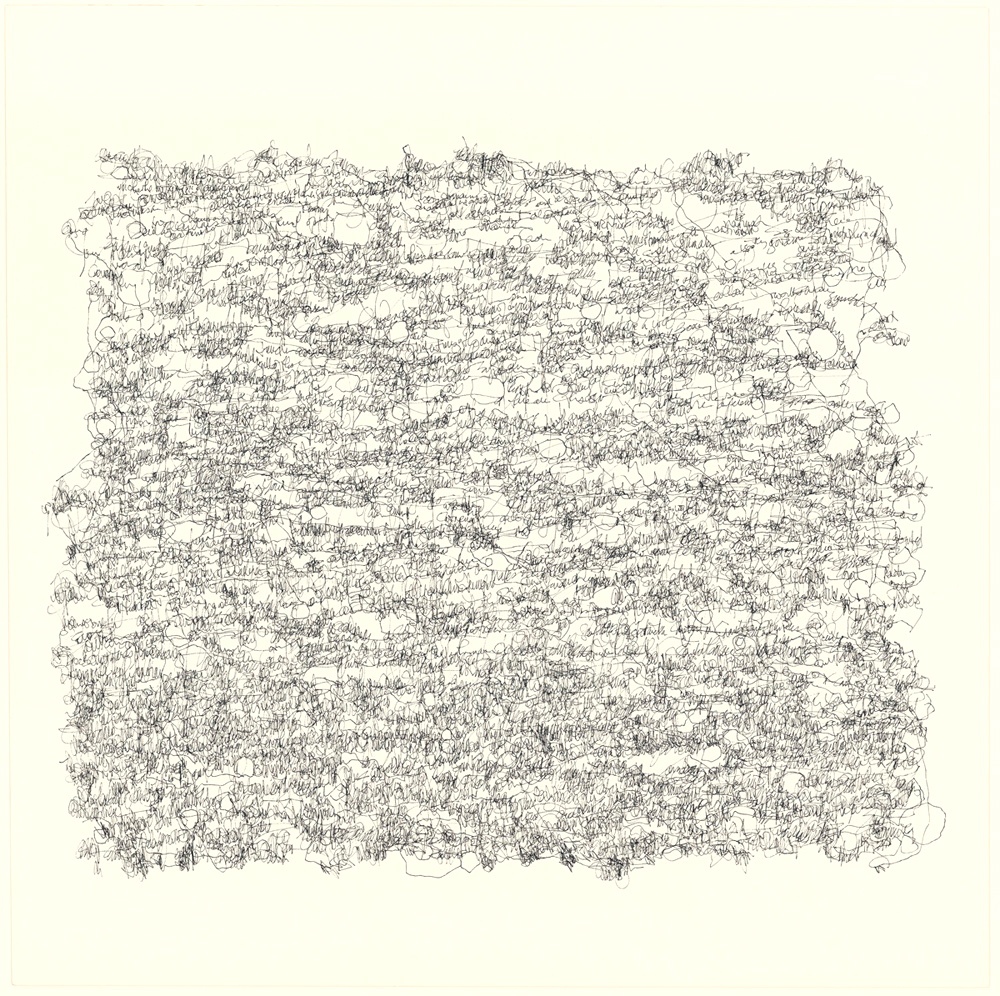

Philosphy 16
Ink on Paper
11″ x 14″
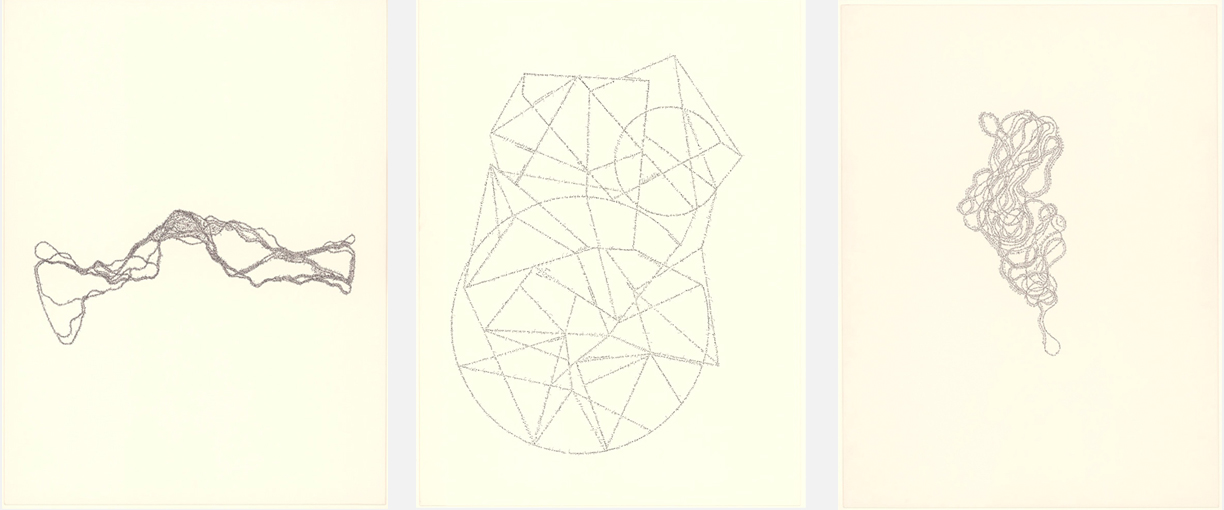

Quantum Physics 6, Ink on Paper, 11″ x 14″
Quantum Physics 11, Ink on Paper, 11″ x 14″
Quantum Physics 1, Ink on Paper, 11″ x 14″